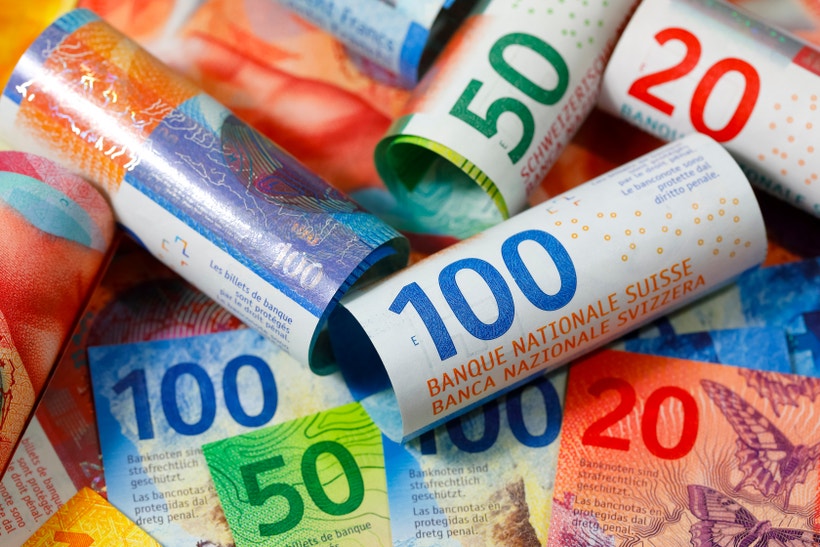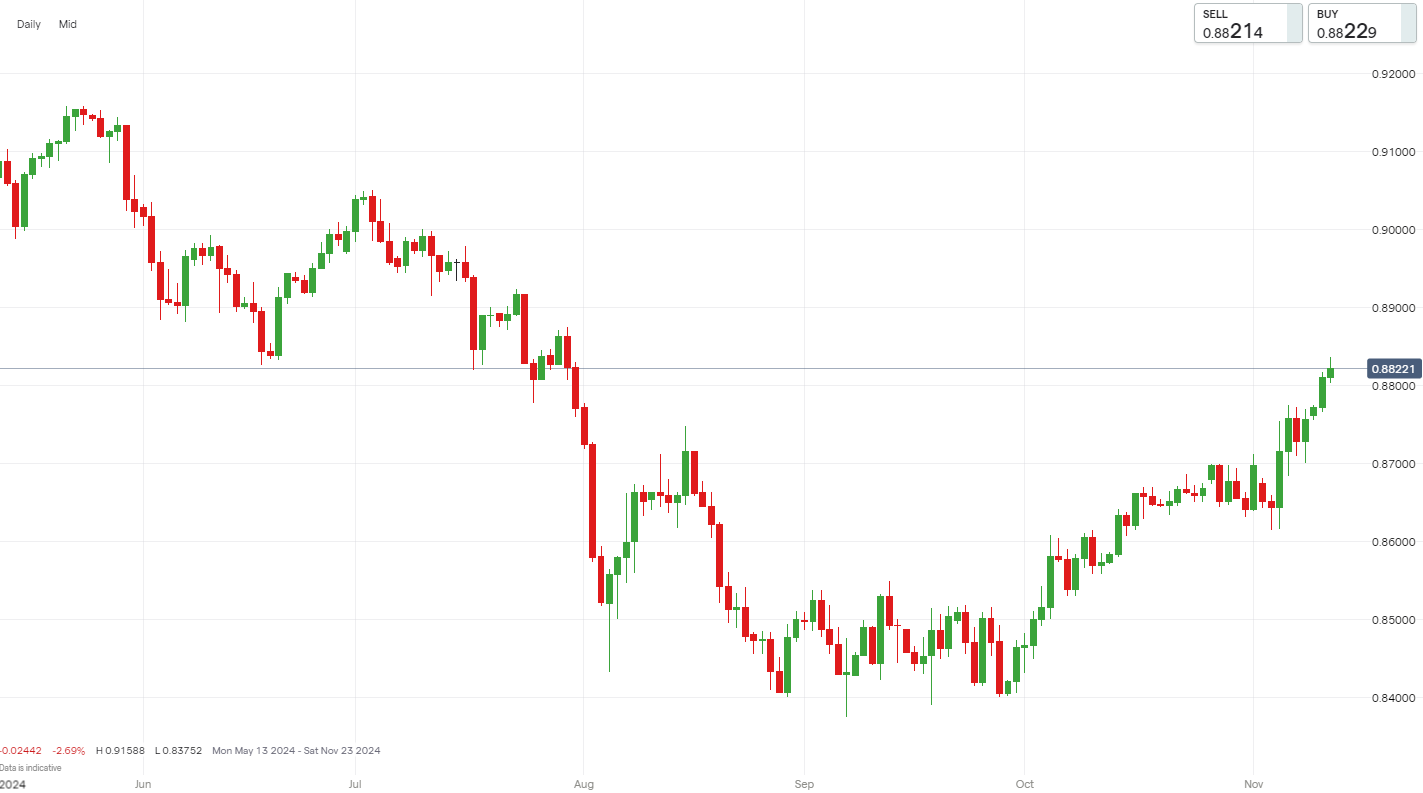USD/CHF price action: pair on steady climb ahead of SNB meeting
USD/CHF climbs to new highs post-election amid a strong dollar and potential SNB rate cut, highlighting market volatility. Traders should watch central bank decisions and economic indicators closely.

Key points
- USD/CHF climbs to 0.88226, highest since July
- Dollar index reaches 106.1 post-Trump election win
- SNB faces potential 50 bps rate cut amid low inflation
- Fed's rate cuts may weaken dollar's investor appeal
- Expect increased USD/CHF volatility with central bank actions
USD/CHF Hits Above 0.8800
The USD/CHF currency pair has seen a steady climb this month, reaching a high of 0.88226—a level not seen since July. This strength in the pair is largely attributed to the US dollar's robust performance post-election. The upward trend marks a recovery from its October low of 0.85709, reflecting the dollar's dominance in the forex market. With Trump's victory, the dollar has gained significant ground against most other currencies, supporting the dollar's rally against the Swiss franc.
USD/CHF price history

USD Nears Two-Year Highs Post-Election
The dollar index has risen to approximately 106.1, marking monumental gains following the recent US election in which Trump emerged victorious. Trump's policies, particularly those focusing on trade tariffs, have bolstered the dollar's strength. However, the potential outcome of Congressional control could significantly alter fiscal policy direction, affecting spending and taxes. Meanwhile, the Federal Reserve has announced a cautious 25 basis point rate cut, with another expected in December. These anticipated rate cuts could weaken the dollar if political and fiscal uncertainties continue, reducing its appeal to investors seeking stable returns.
Swiss National Bank Interest Rate Uncertainty Ahead
With the Swiss National Bank's meeting scheduled for December 12th, economists have adjusted their expectations regarding interest rate decisions due to lower-than-expected CPI data and a significant drop in Swiss inflation to 0.6% in October. There is a growing forecast for a 50-basis point rate cut from the current rate of 1.0%. Lower interest rates typically make a currency less attractive to international investors, potentially leading to a depreciation of the Swiss franc. However, a weaker franc can enhance Switzerland's export competitiveness by making its goods and services more appealing to foreign buyers. This potential rate cut could also indicate the SNB's efforts to stimulate economic growth and address low inflation.
What’s Next for USD/CHF?
The USD/CHF pair has recently surpassed 0.8800, reaching a peak of 0.88226—a level last seen in July—reflecting the US dollar's strong post-election performance. However, the situation is dynamic as the Federal Reserve's recent 25 basis point rate cut, with another expected in December, could weaken the dollar's appeal. Concurrently, the Swiss National Bank's upcoming meeting introduces additional uncertainty. With Swiss inflation at 0.6% and lower-than-expected CPI data, a potential 50 basis point rate cut by the SNB could further depreciate the Swiss franc. In this context, the USD/CHF pair could face increased volatility, with traders needing to monitor central bank decisions, economic indicators, and geopolitical developments to effectively navigate the market landscape.
More where that came from: check out what’s new in forex today on our YouTube channel:
How to Trade USD/CHF
- Open an account to get started, or practice on a demo account
- Choose your forex trading platform
- Open, monitor, and close positions on USD pairs
Trading forex requires an account with a forex provider like tastyfx. Many traders also watch major forex pairs like EUR/USD and USD/JPY for potential opportunities based on economic events such as inflation releases or interest rate decisions. Economic events can produce more volatility for forex pairs, which can mean greater potential profits and losses as risks can increase at these times.
You can help develop your forex trading strategies using resources like tastyfx’s YouTube channel. Our curated playlists can help you stay up to date on current markets and understanding key terms. Once your strategy is developed, you can follow the above steps to opening an account and getting started trading forex.
Your profit or loss is calculated according to your full position size. Leverage will magnify both your profits and losses. It’s important to manage your risks carefully as losses can exceed your deposit. Ensure you understand the risks and benefits associated with trading leveraged products before you start trading with them. Trade using money you’re comfortable losing. Past performance is not indicative of future results.
